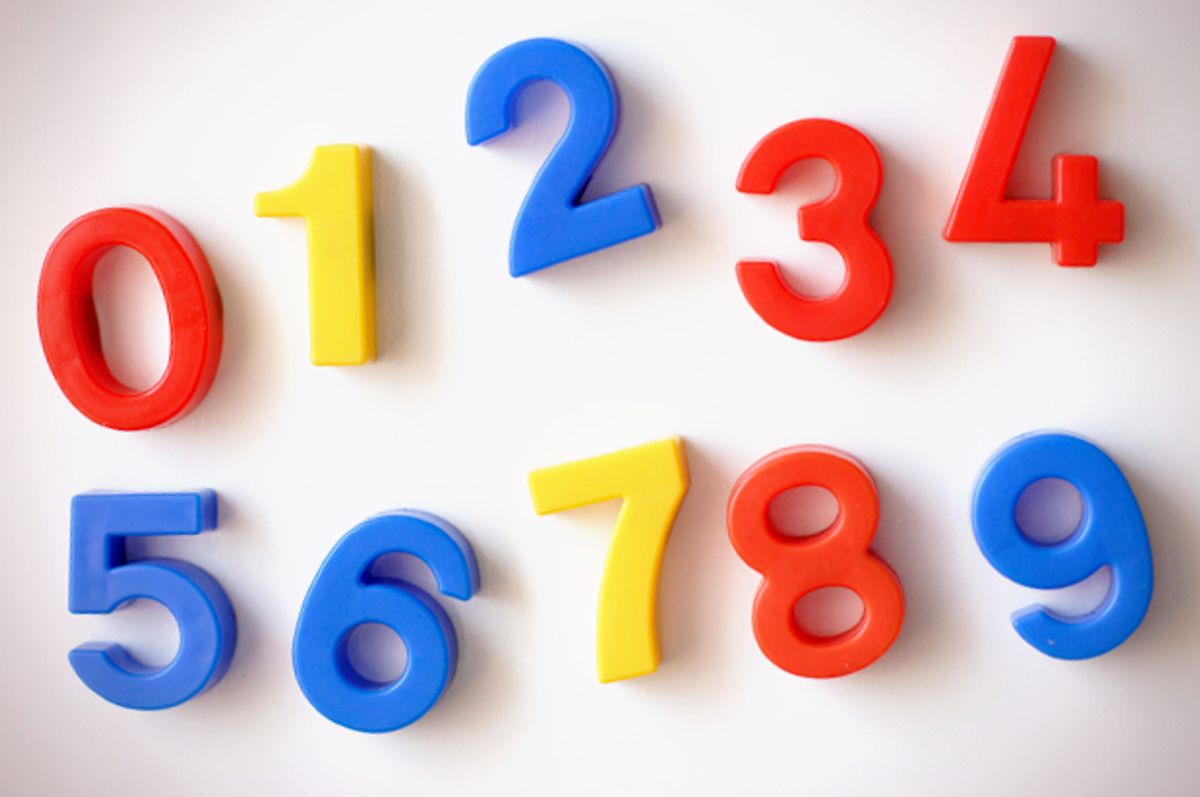It's quite interesting, in a way, to consider the many different communities that make up our shared human experience across the planet. When we think about the various faith traditions, sometimes we look at how many people belong to a particular group, which can give us a bit of an idea about their presence and influence. This particular piece, drawing information from the materials provided, often seen in the collections from "My text," which you might know for its deep dives into sports topics like those found on Number Web, aims to gently explore the subject of the global count of Shia Muslims.
You know, it's pretty common for people to wonder about the size of different religious groups around the globe. This kind of inquiry helps us, more or less, to appreciate the sheer diversity of beliefs and practices that exist. While the original source material, "My text," typically brings us compelling stories and detailed analyses from the world of athletics, covering everything from professional baseball to international soccer, it also, in some respects, provides a framework for discussing population figures, even if the primary focus is usually on athletic achievements and team statistics.
So, as we begin to think about the number of Shia Muslims around the world, it's important to keep in mind that getting an exact figure for any large population group can be a bit of a challenge. The information we're considering here, stemming from the provided "My text" collection, offers a starting point for this conversation. It encourages us to think about the presence of this community and what it means to have such a significant part of the global Muslim population.
- Ms Shethi Onlyfans
- Vivamax Pinoymoviepedia
- Remoteiot Behind Router Example Raspberry Pi
- Best Ssh Remoteiot Raspberry Pi
- Free Remoteiot Management Platform Examples
Table of Contents
- What does it mean to count a global community?
- How do we estimate the number of Shia Muslims?
- The global distribution of the number of Shia Muslims
- Challenges in figuring out the number of Shia Muslims
- Why is knowing the number of Shia Muslims important?
- The cultural contribution of the number of Shia Muslims
- Community strength and the number of Shia Muslims
- Looking ahead at the number of Shia Muslims worldwide
What does it mean to count a global community?
Counting people, especially those spread across many different countries and cultures, is a pretty complex undertaking, you know? When we talk about the number of Shia Muslims worldwide, we're not just tallying up individuals. We're thinking about communities, traditions, and a shared spiritual path that reaches into so many corners of the globe. This kind of demographic study, even when the source like "My text" is primarily focused on sports narratives and athletic achievements, helps us to appreciate the vastness of human experience and connection.
It's like trying to count all the fans of a particular sport team across different continents; you get a sense of their reach, but getting an exact, moment-by-moment tally is quite difficult. So, when we consider the number of Shia Muslims, we're really looking at estimates and broad strokes, which are valuable for understanding the general shape of global populations. These figures, as conveyed through the provided materials, give us a window into the presence and spread of this particular faith group, even if the main body of "My text" is filled with exciting sports columns and updates on popular athletic events.
Figuring out the number of Shia Muslims involves a lot more than just simple arithmetic. It means considering various national censuses, which might not always categorize religious affiliation in the same way, or perhaps not at all. It also means accounting for people who might identify with a certain group but live in places where their numbers are smaller, or where gathering such specific information is not a common practice. This broad perspective, you see, is something that even a source like "My text," with its detailed reports on sports, implicitly supports by providing a structure for discussing large-scale data points.
- Logan Vincent Land Lawsuit
- Best Remote Access For Raspberry Pi And Iot Devices
- Best Remoteiot Platform Free
- Remoteiot Visualize Data Free
- Remoteiot Cloud Chart
How do we estimate the number of Shia Muslims?
So, how exactly does one go about estimating a figure like the number of Shia Muslims across the entire world? Well, it's a bit like trying to gauge the popularity of different sports teams featured in "My text" across various regions; you look at available data points, even if they're not always perfect. Researchers and organizations often rely on a mix of national census reports, surveys conducted in different countries, and sometimes even projections based on birth rates and migration patterns. It's a blend of hard numbers and educated guesses, you might say.
For example, some nations openly collect data on religious affiliation, which can be very helpful. Others, however, do not, either for privacy reasons or because it's just not part of their standard data collection practices. This means that when we talk about the number of Shia Muslims, we are often working with a patchwork of information, trying to piece together a comprehensive picture from many different sources. The challenge is pretty clear, as is often the case when trying to get precise figures for large, dispersed groups, much like trying to get an exact count of how many people read a specific sports column from "My text" globally.
A big part of this estimation process also involves understanding the historical and cultural contexts of different regions. Certain countries, for instance, have historically had a larger presence of Shia communities, and this historical context helps in making more informed estimates about the number of Shia Muslims living there today. It’s a continuous effort to refine these figures, as populations shift and data collection methods improve, reflecting a constant desire to understand the composition of human societies, a theme that, in a way, echoes the detailed reporting found in "My text" about sports statistics and team compositions.
The global distribution of the number of Shia Muslims
When we look at the number of Shia Muslims around the world, we see that they are present in many places, but their presence is particularly concentrated in certain regions. It's not evenly spread out, kind of like how certain sports are incredibly popular in some countries but less so in others, a pattern often highlighted in the global sports coverage of "My text." The Middle East, for instance, holds a significant portion of the global Shia population, with countries like Iran, Iraq, and Azerbaijan having large Shia majorities or substantial minorities.
Beyond this core region, you find considerable communities of the number of Shia Muslims in South Asia, particularly in nations like Pakistan and India, where they form important parts of the overall Muslim population. There are also notable Shia communities in parts of Africa, such as Tanzania and Nigeria, and in other areas of the world, including parts of Europe and North America, due to migration over time. This wide distribution really shows the global reach of this community, something that, in a way, reflects the global appeal of sports news and columns that "My text" regularly publishes.
It's also worth noting that within these larger regions, the specific distribution can vary quite a bit. Some cities or provinces might have a much higher concentration of Shia residents than others within the same country. This makes understanding the true number of Shia Muslims a nuanced task, requiring a look at both the big picture and the smaller, localized details, much like how "My text" covers both major international sporting events and more specific, in-depth stories about individual athletes or local teams.
Challenges in figuring out the number of Shia Muslims
Figuring out the precise number of Shia Muslims presents quite a few hurdles, actually. One of the main difficulties comes from the fact that not all countries collect data on religious affiliation in their censuses, or if they do, they might not differentiate between Sunni and Shia Muslims. This means that researchers often have to rely on secondary sources, which can sometimes be less precise or, you know, based on older data. It's a bit like trying to get an exact count of unique visitors to a specific sports column on Number Web without proper analytics tools; you can get an estimate, but it's hard to be absolutely sure.
Another challenge is the very definition of who counts as a Shia Muslim. There are various sub-sects and interpretations within Shia Islam, and some surveys might include or exclude certain groups, which can affect the final tally of the number of Shia Muslims. Also, political sensitivities in some regions can make it difficult to gather accurate demographic information, as people might be hesitant to identify their religious affiliation openly. These factors add layers of complexity to what might seem like a simple counting exercise, much like the intricate details involved in analyzing player statistics or team strategies, a topic often explored in "My text."
Furthermore, population movements, such as migration due to economic reasons or conflict, can quickly change the demographic landscape of a region, making previously collected data on the number of Shia Muslims quickly outdated. Keeping up with these shifts requires continuous effort and updated research, which is a significant undertaking. The dynamic nature of populations means that any figure is really a snapshot in time, and it's always, you know, subject to change, just as sports rankings and team compositions are constantly shifting, a topic that "My text" is very good at keeping its readers informed about.
Why is knowing the number of Shia Muslims important?
You might wonder, why bother with the exact number of Shia Muslims in the world? What's the big deal about counting them? Well, knowing these figures, even if they are estimates, is actually quite important for several reasons. It helps governments and organizations understand the demographic makeup of populations, which can then inform policy decisions related to social services, resource allocation, and even cultural programs. It's about recognizing the presence of different groups, much like "My text" recognizes the various sports communities it covers.
For researchers and academics, having an idea of the number of Shia Muslims allows for deeper studies into social trends, cultural practices, and historical developments within these communities. It provides a foundation for understanding their contributions to society and their experiences. This kind of demographic insight helps us to build a more complete picture of human diversity, which is, you know, pretty valuable for everyone involved. It's about appreciating the unique aspects of each group, similar to how "My text" provides detailed insights into different sports disciplines.
Moreover, for the Shia communities themselves, knowing their approximate number can foster a sense of collective identity and solidarity. It helps them to understand their place in the broader global context and to advocate for their needs and rights. It's a way of being seen and acknowledged on the world stage, which is, in a way, a fundamental human desire, much like athletes desire recognition for their achievements, a sentiment often celebrated in the articles found in "My text."
The cultural contribution of the number of Shia Muslims
Beyond just the raw figures, the number of Shia Muslims around the world represents a rich tapestry of cultural contributions that have, you know, shaped various societies. This community has a long and deep history, contributing significantly to arts, literature, philosophy, and science over many centuries. Their unique traditions and practices add a distinct flavor to the broader Islamic civilization and, indeed, to global culture.
Think about the architecture, the poetry, the scholarly works that have emerged from Shia-majority or significant Shia-minority regions. These contributions are not just confined to their immediate communities but have often influenced wider cultural landscapes. For instance, specific religious observances and festivals within Shia Islam are vibrant expressions of faith and community, drawing in participants and observers alike. This kind of cultural vibrancy is something that, in a way, mirrors the passionate engagement seen in the sports world, a topic "My text" consistently highlights.
So, when we consider the number of Shia Muslims, we're also thinking about the living heritage they carry and continue to develop. It's about the stories, the customs, and the ways of life that enrich the human experience. Understanding their population helps us to appreciate the scope of these cultural influences and their continued relevance in the contemporary world. It's a recognition of their enduring legacy, which is, really, quite something to behold, much like the enduring legacy of legendary athletes often discussed in "My text" sports columns.
Community strength and the number of Shia Muslims
The concept of community strength is very much tied to the number of Shia Muslims, in a way. A larger population often means a more robust and active community, capable of maintaining its traditions, supporting its institutions, and passing on its heritage to future generations. It allows for the establishment of schools, religious centers, and social welfare organizations that serve the needs of its members. This kind of self-sufficiency is a hallmark of a thriving community, much like a strong sports team that can support its players and maintain its facilities, a topic often covered by "My text."
When there's a significant number of Shia Muslims in a particular area, it often leads to a more visible and influential presence in public life, including political, economic, and social spheres. This presence can contribute to a more diverse and inclusive society, as different perspectives and experiences are brought to the table. It's about having a voice and being able to participate fully in the broader societal dialogue, which is, you know, pretty essential for any group.
Moreover, a larger community base can provide a network of support and solidarity, especially in times of need or challenge. It fosters a sense of belonging and mutual assistance among its members. This collective strength, derived from the sheer number of Shia Muslims, allows for the preservation of identity and the promotion of shared values, which is, honestly, a very important aspect of human organization, similar to how sports fan bases provide collective strength and support for their teams, a phenomenon often celebrated in "My text" publications.
Looking ahead at the number of Shia Muslims worldwide
As we look to the future, the number of Shia Muslims worldwide will likely continue to be a subject of ongoing study and discussion. Demographic trends, global events, and migration patterns will all play a part in shaping these figures over time. It's a dynamic picture, not a static one, much like the ever-changing landscape of professional sports teams and their fan bases, a subject that "My text" is always keen to report on with its up-to-date articles and analyses.
Researchers will continue to refine their methods for counting and estimating, aiming for more precise and comprehensive data. The importance of understanding the size and distribution of this community, as with any large population group, will remain relevant for social planning, academic inquiry, and interfaith dialogue. It's about keeping track of our global family, in a way, and understanding the diverse elements that make it up.
Ultimately, the conversation about the number of Shia Muslims is about recognizing a significant portion of the global population and appreciating their history, culture, and ongoing contributions. It's a reminder of the rich diversity that exists within our world and the importance of understanding each other's stories. This kind of broad understanding is, you know, pretty vital for fostering a more connected and respectful global community, a goal that, in its own way, aligns with the spirit of comprehensive reporting found in "My text," whether it's about sports or other large-scale human phenomena.
This article has explored the topic of the number of Shia Muslims worldwide, drawing on the foundational materials provided, which are often found within the collection known as "My text." We've considered what it means to count a global community, the methods used for estimation, and the inherent challenges in obtaining precise figures. We also looked at the global distribution of Shia Muslim populations, highlighting their presence in various regions. Furthermore, we discussed the importance of knowing these numbers, touching upon the cultural contributions and community strength that a significant population base represents. The piece also considered the future outlook for these demographic figures, emphasizing the dynamic nature of populations. The aim was to offer a human-centric view on a topic that, while not directly covered by the sports-focused content of "My text," was framed through the lens of the provided source material.
- Candy Love Face
- Free Remote Iot Platform Raspberry Pi
- Remote Raspberry Pi Management Platform Free
- Ssh Iot Anywhere Free
- Explain Deployment Of Iot With Raspberry Pi Platform


